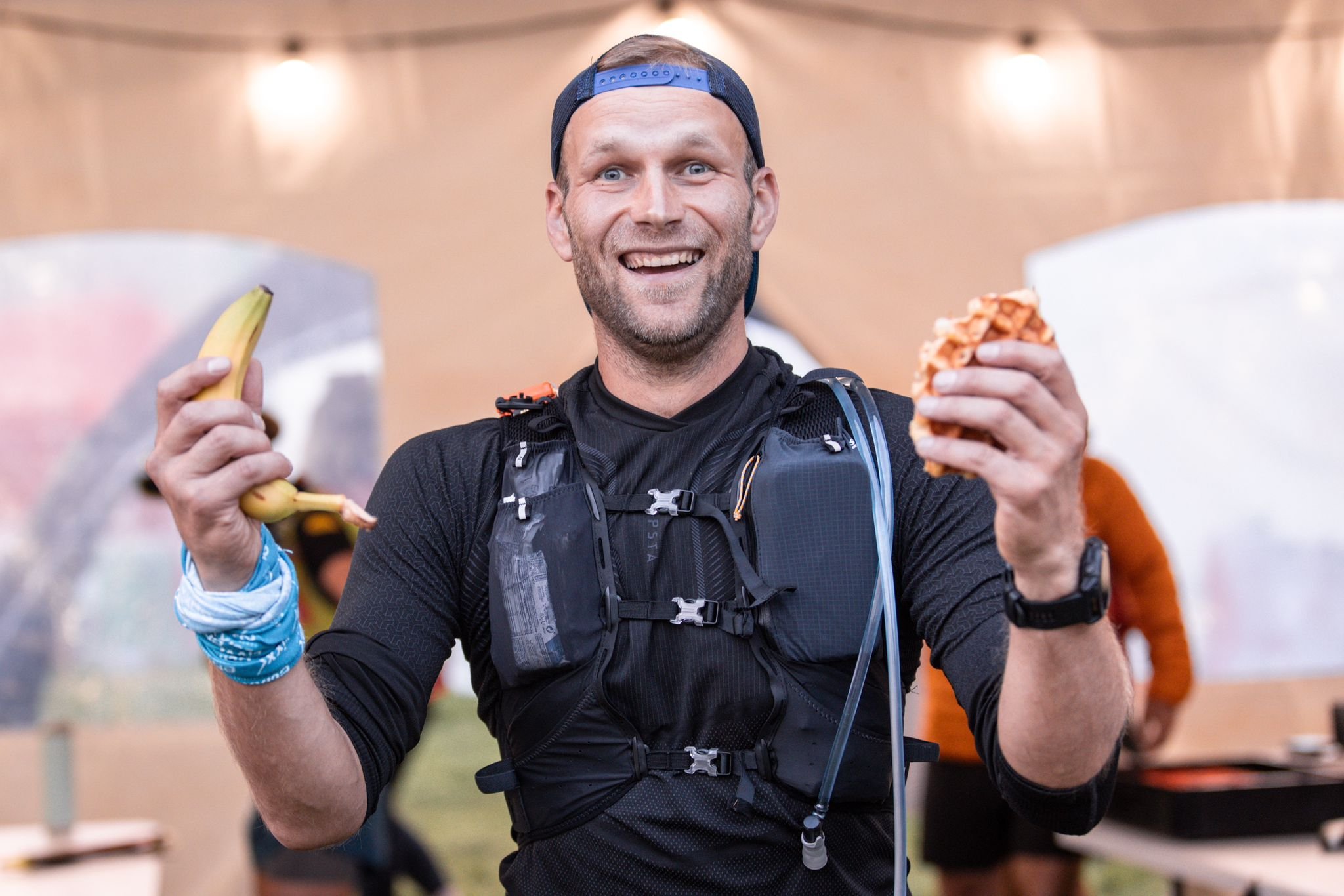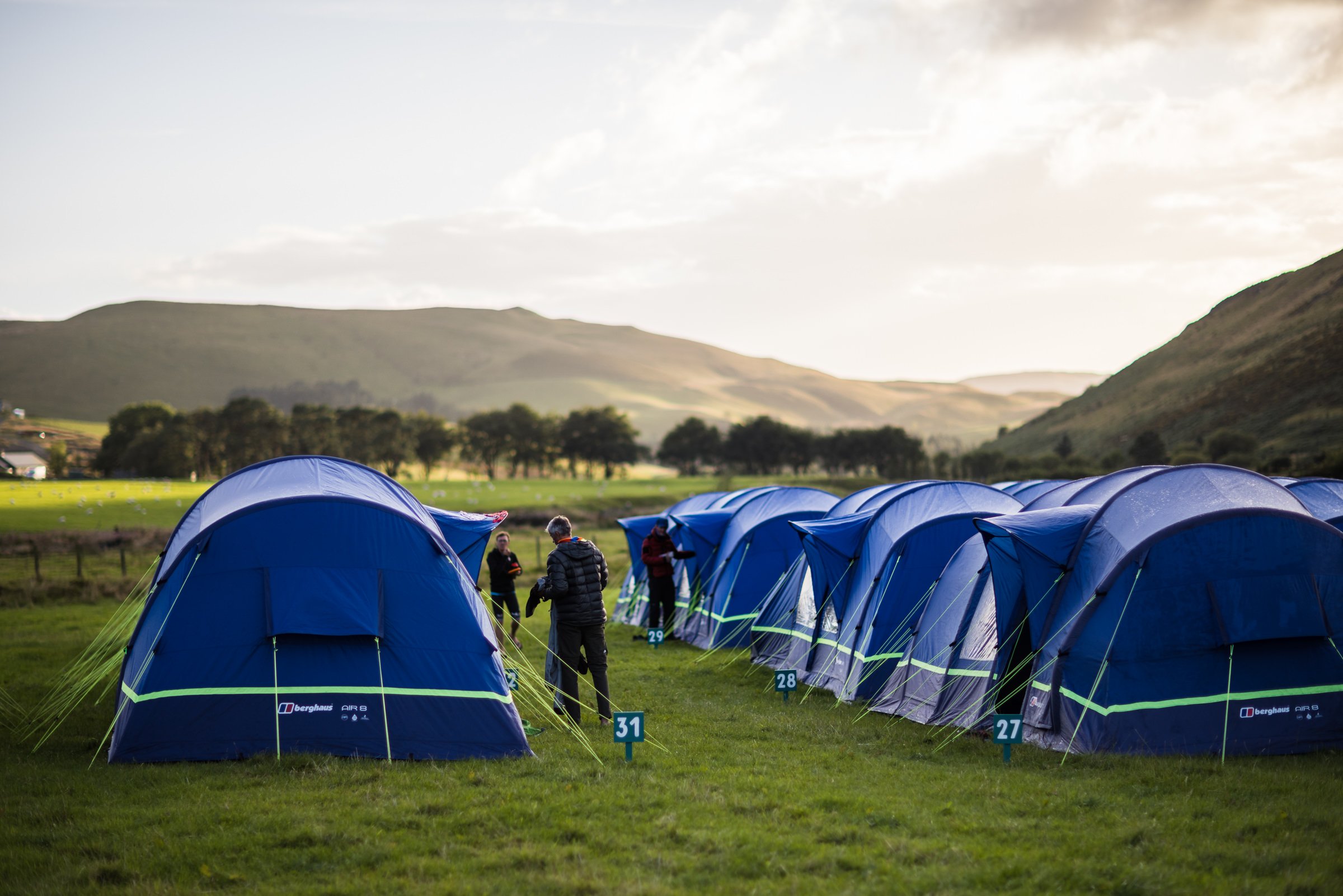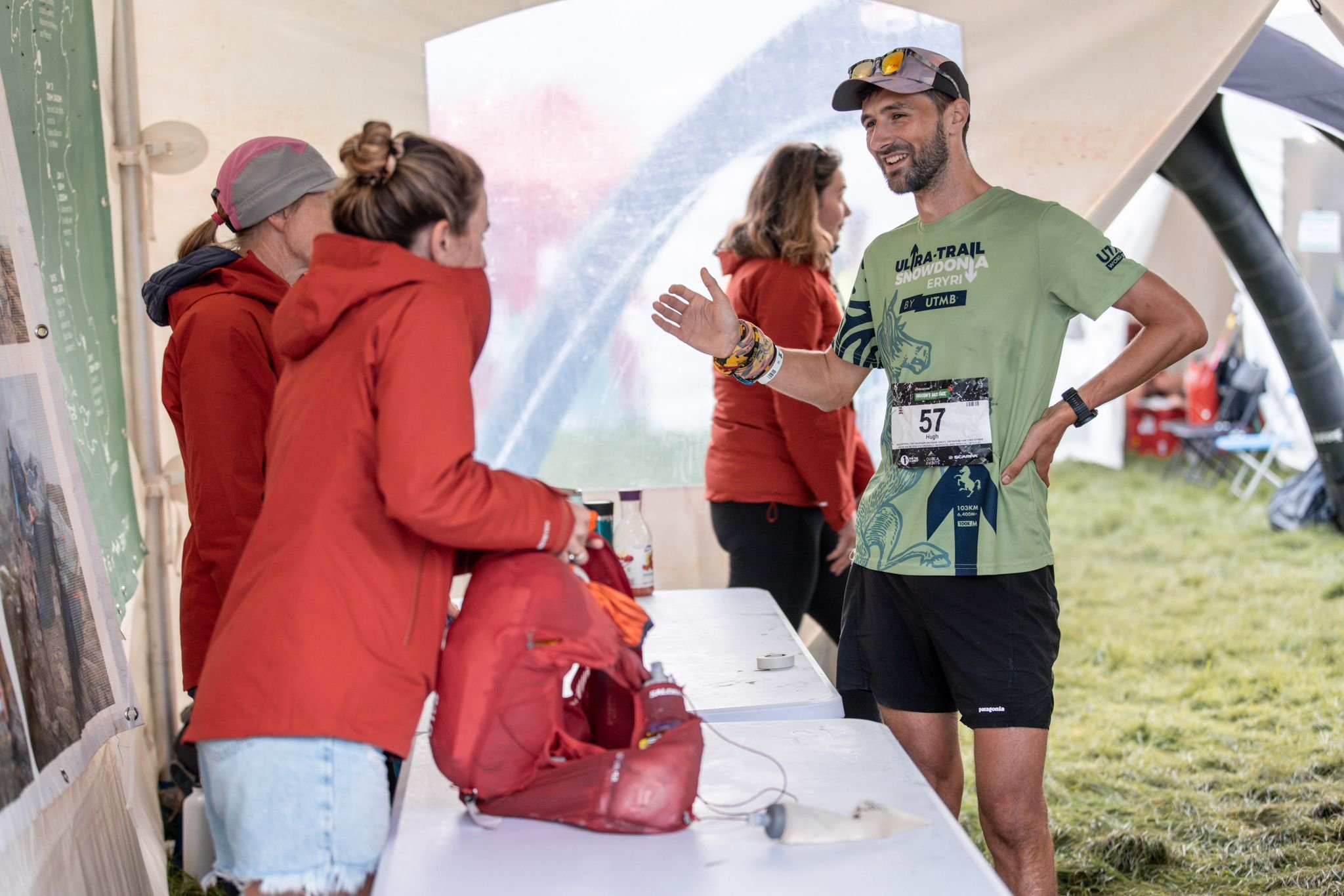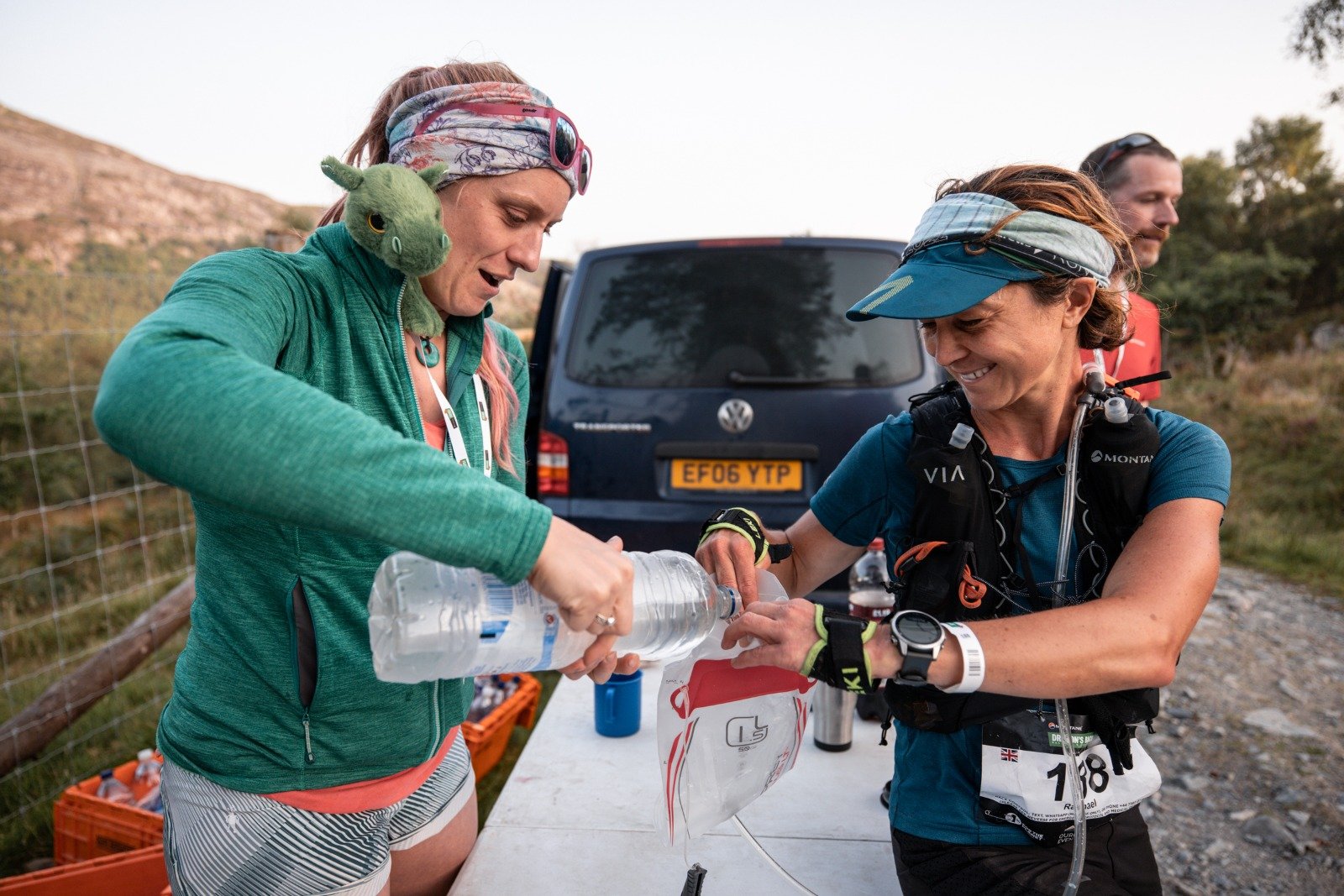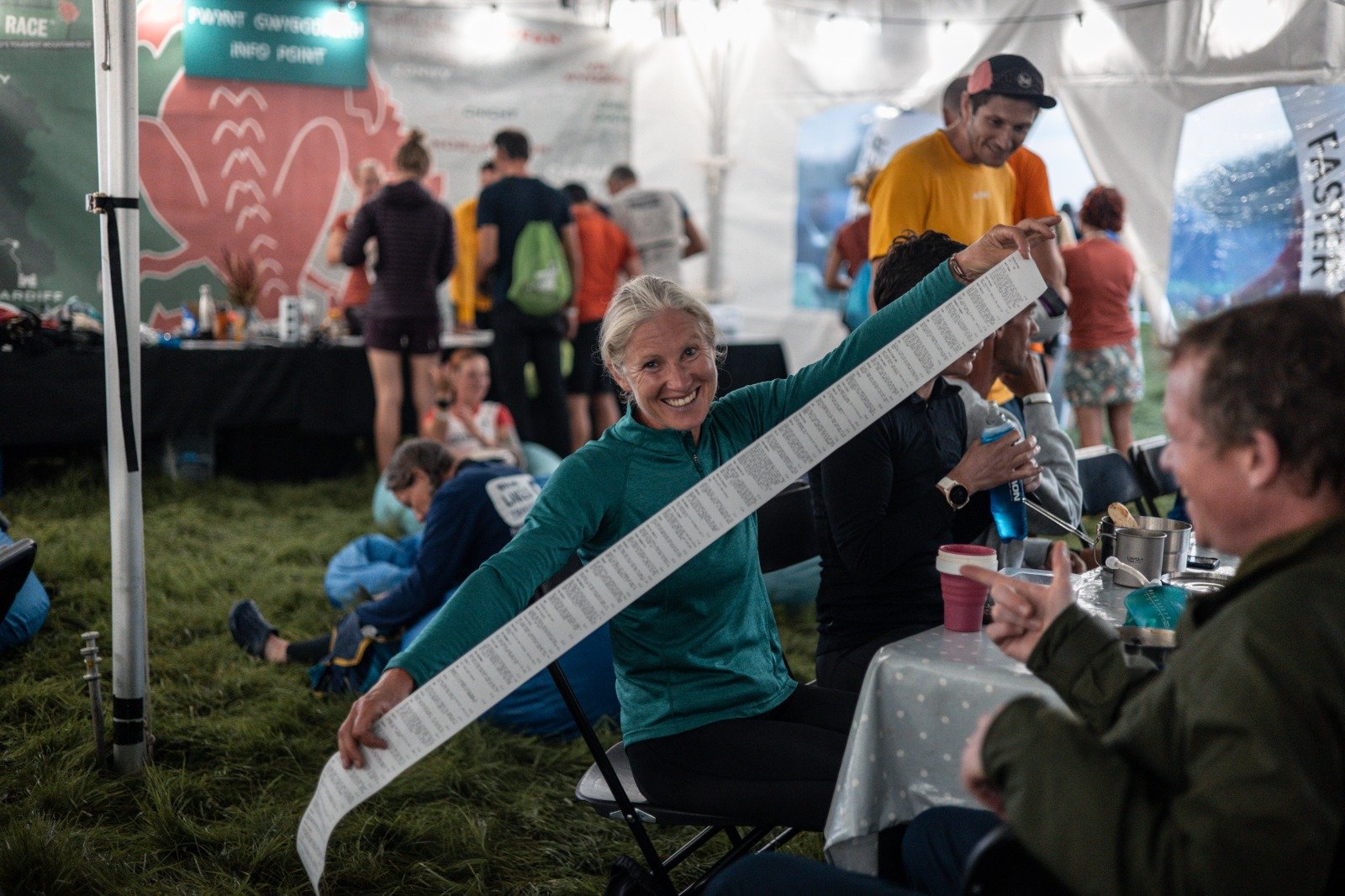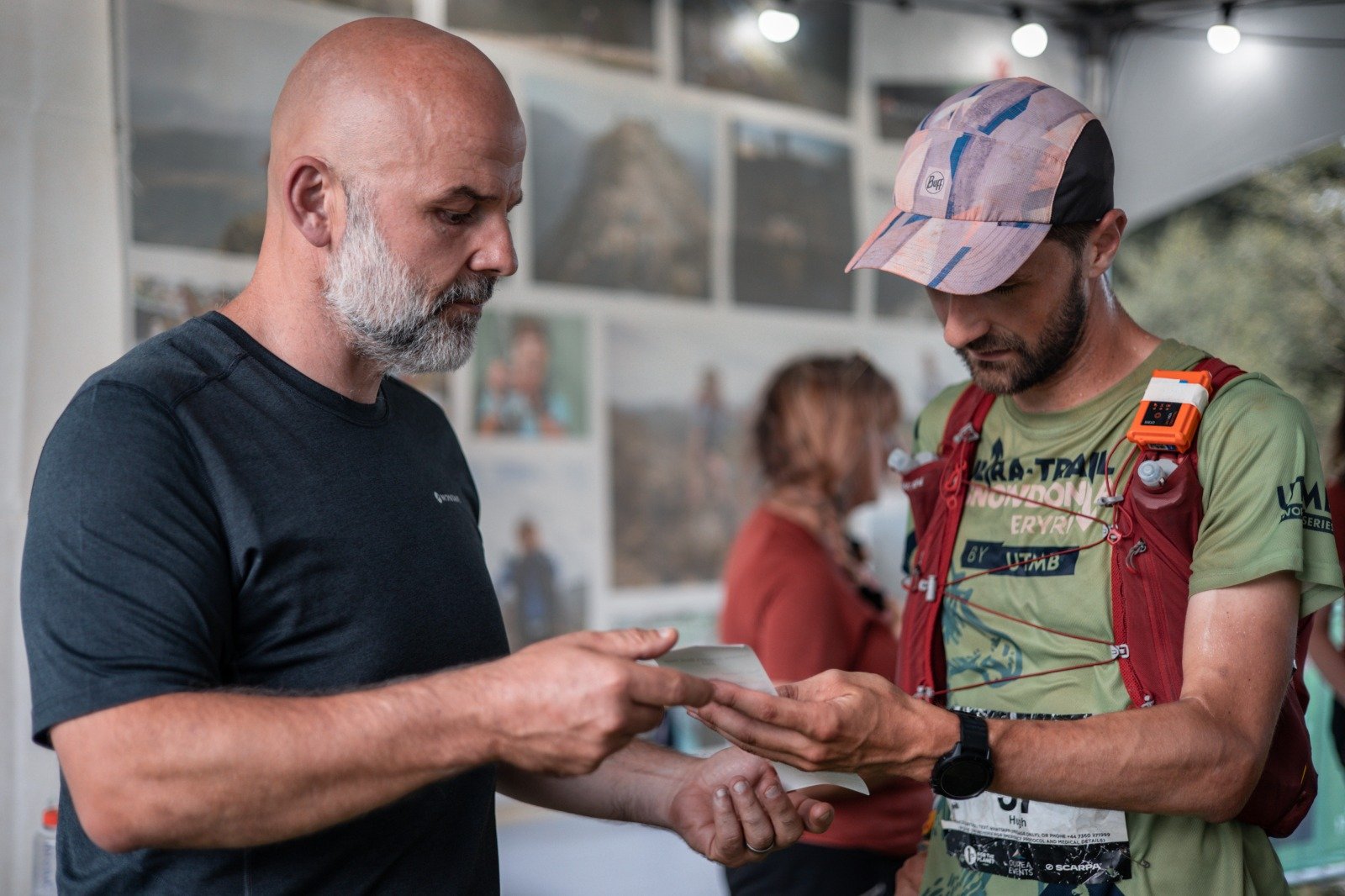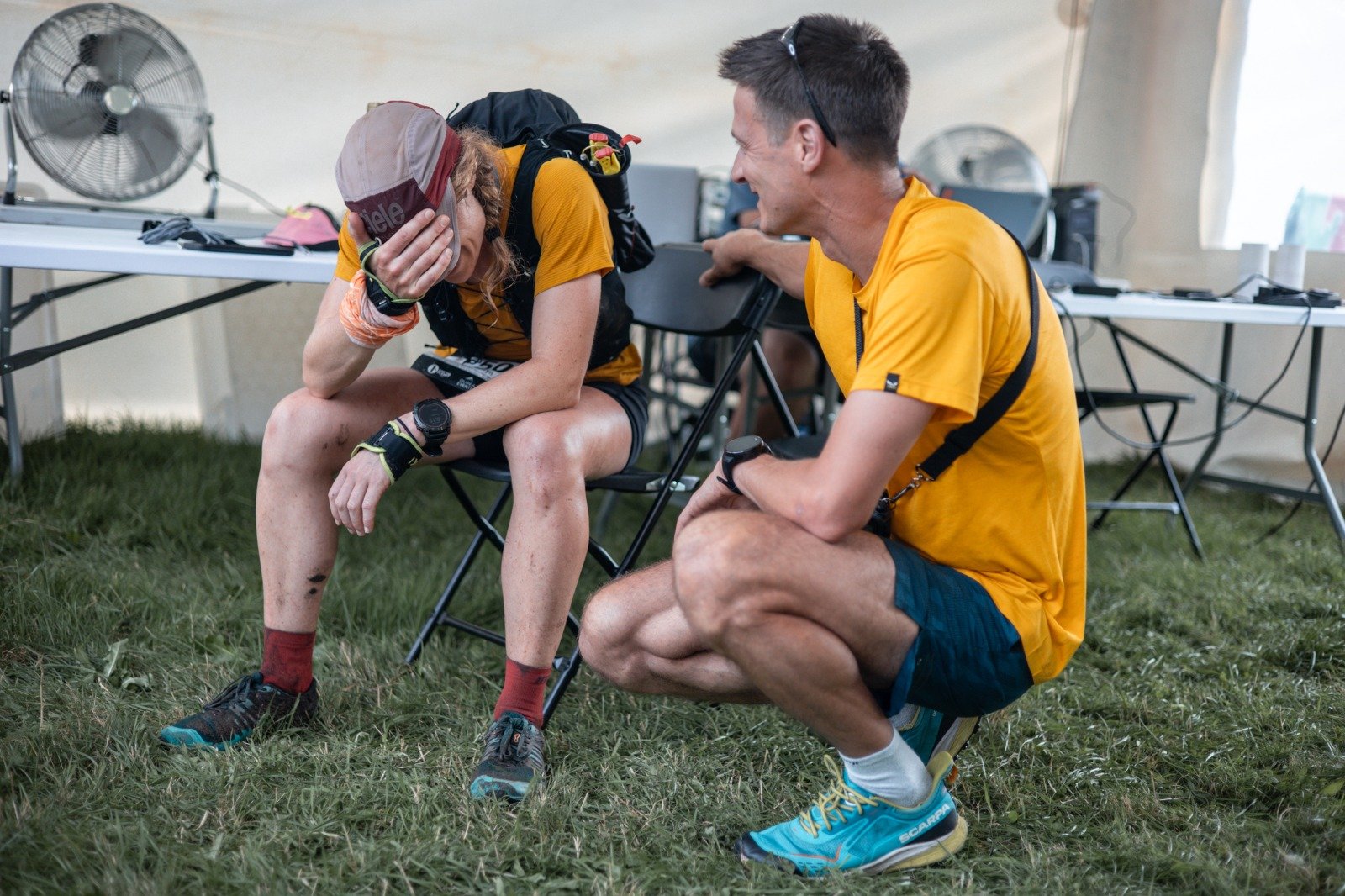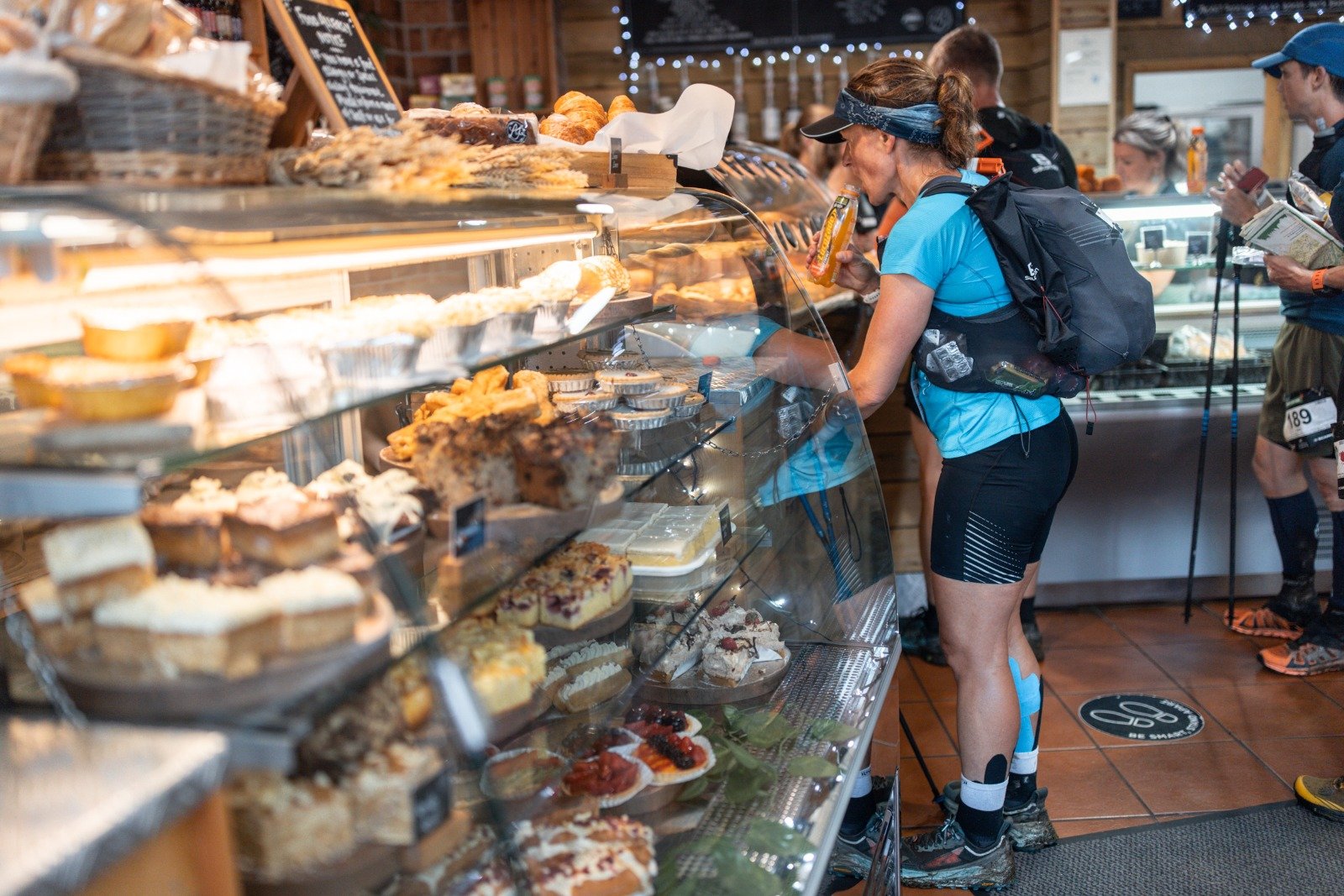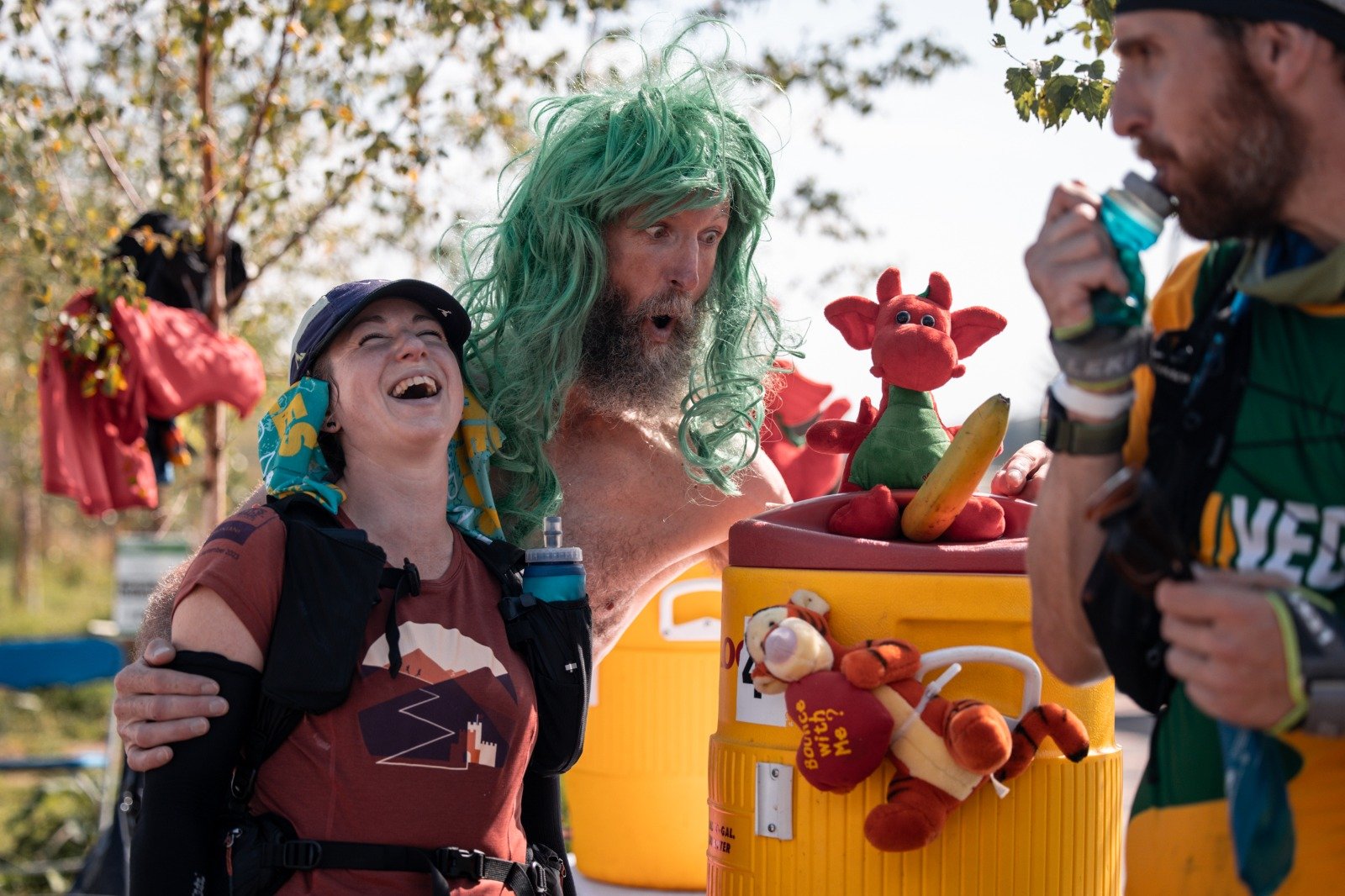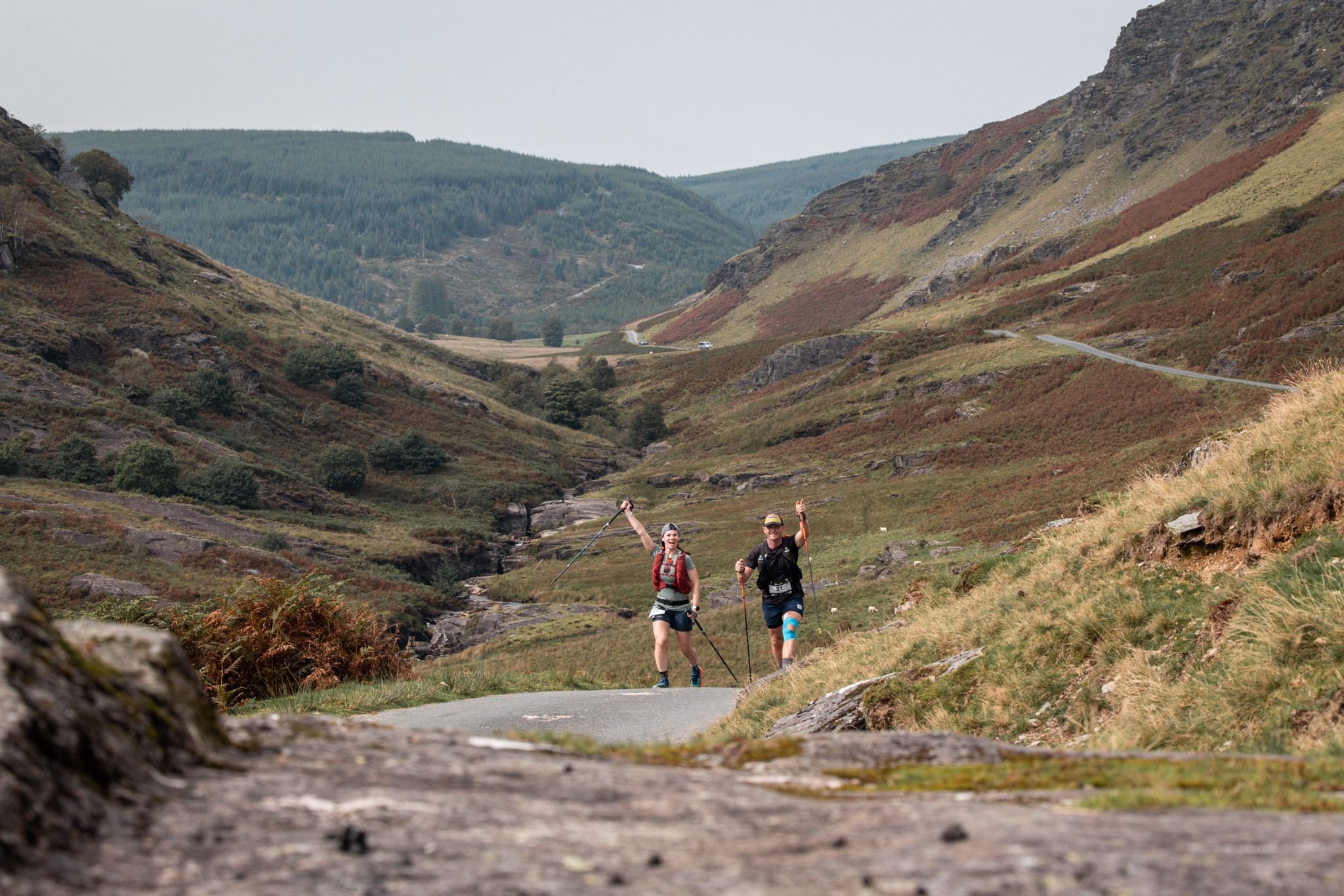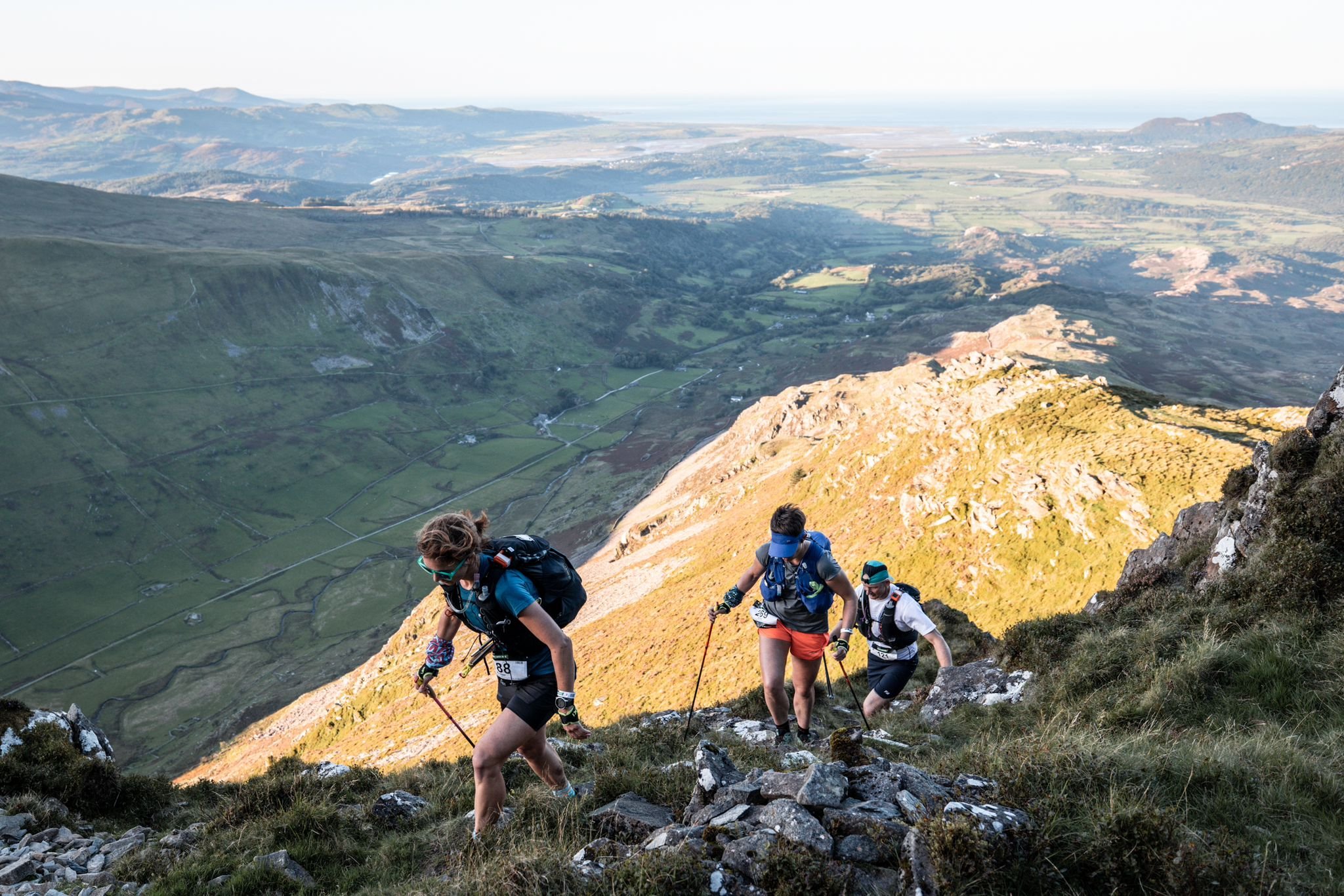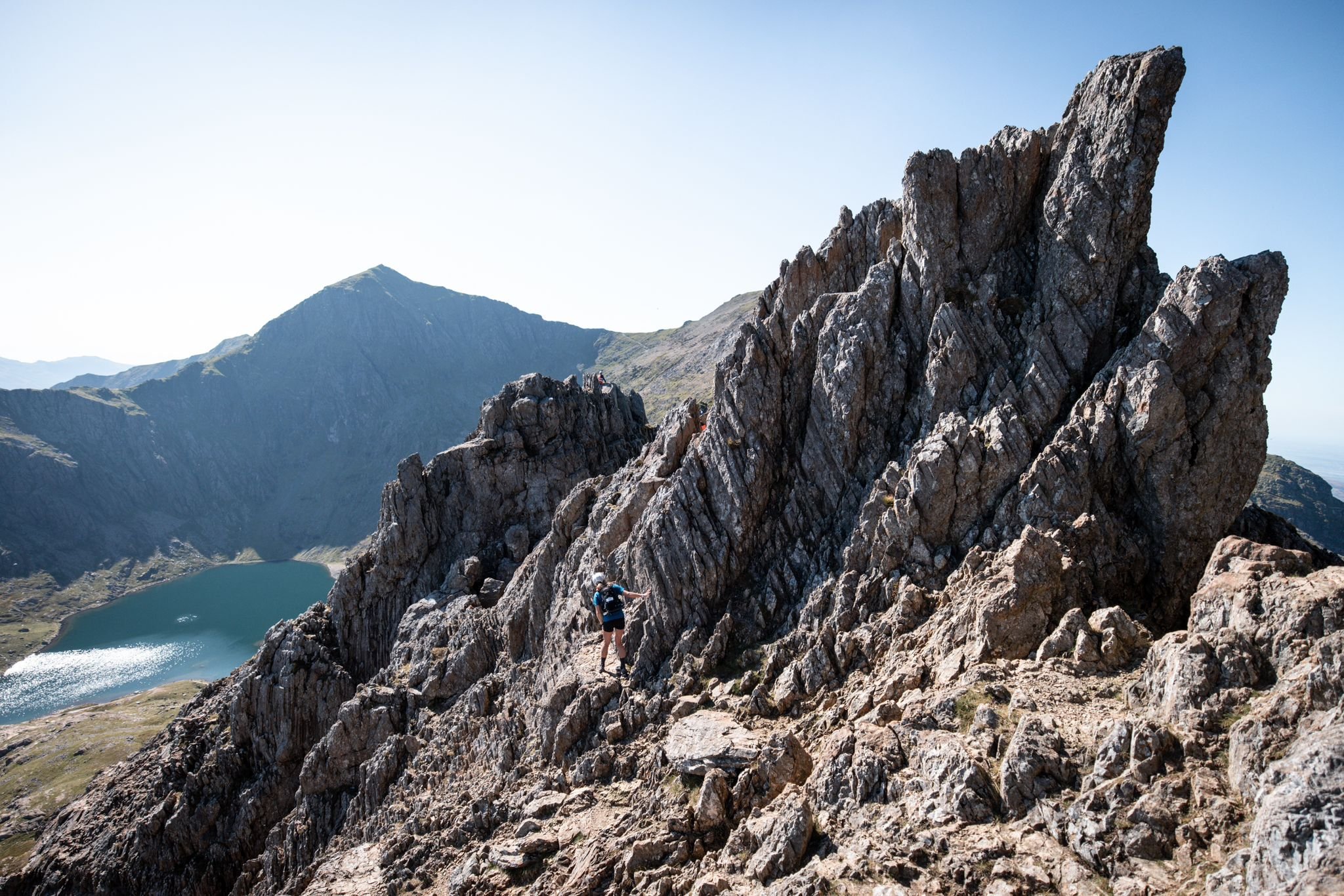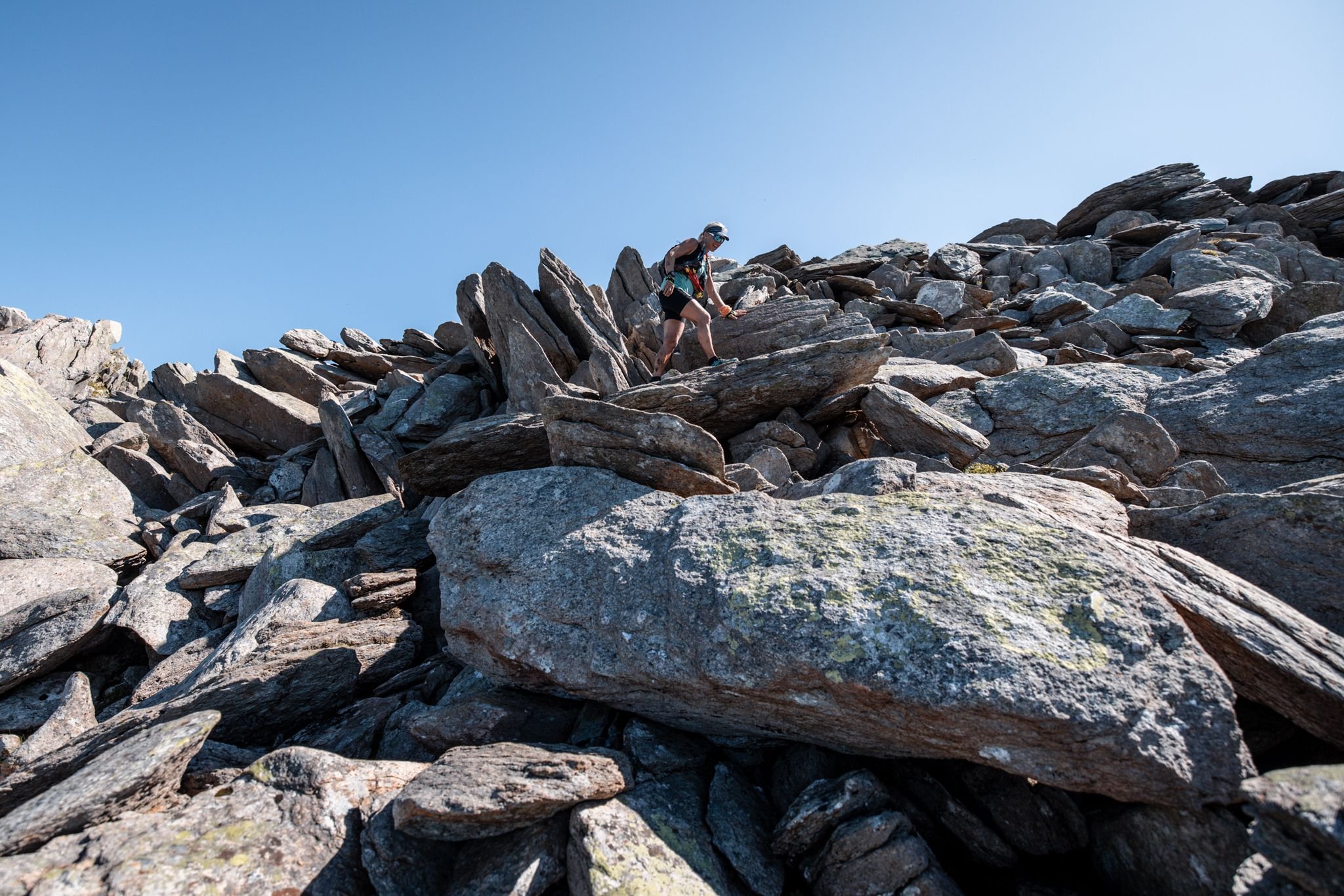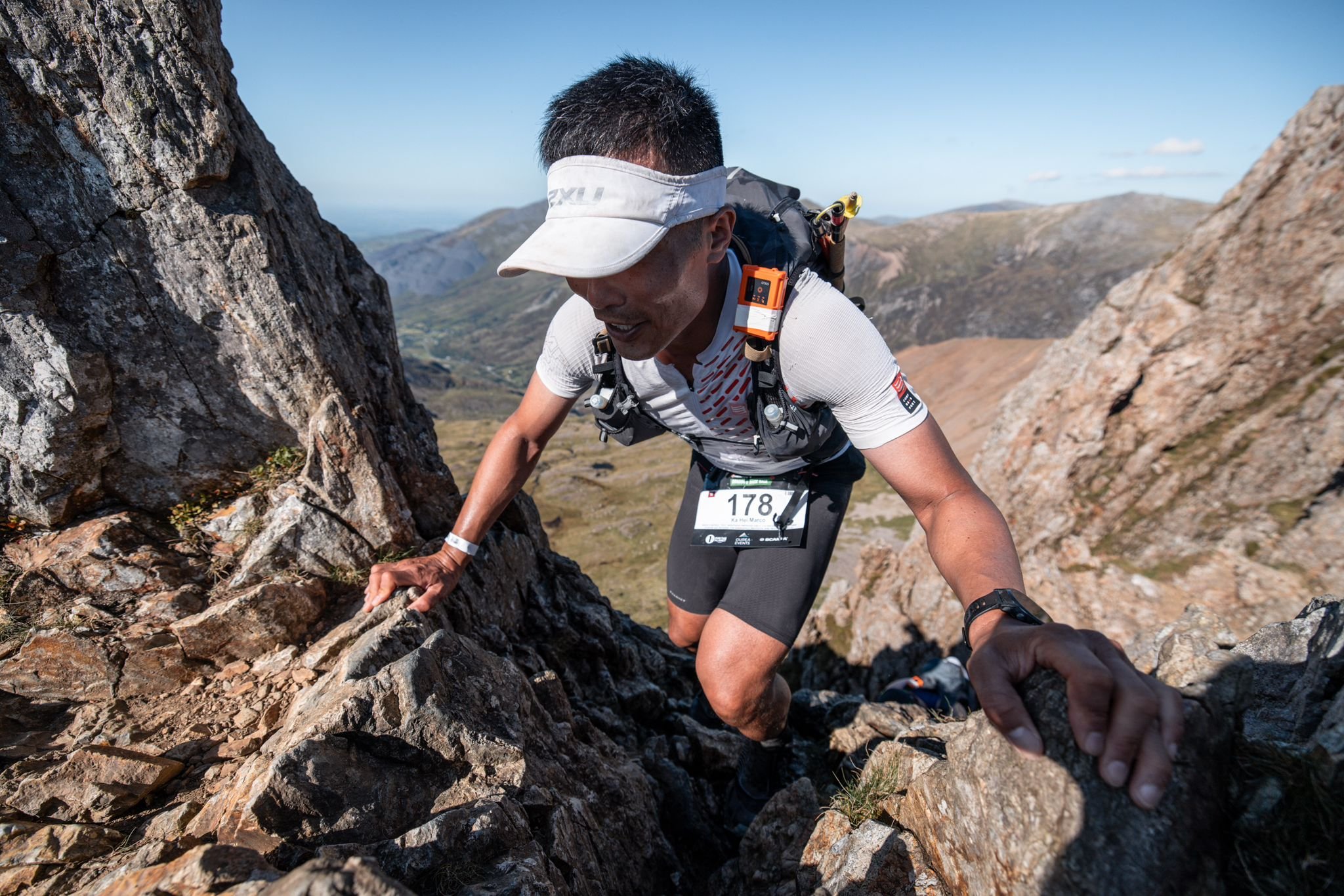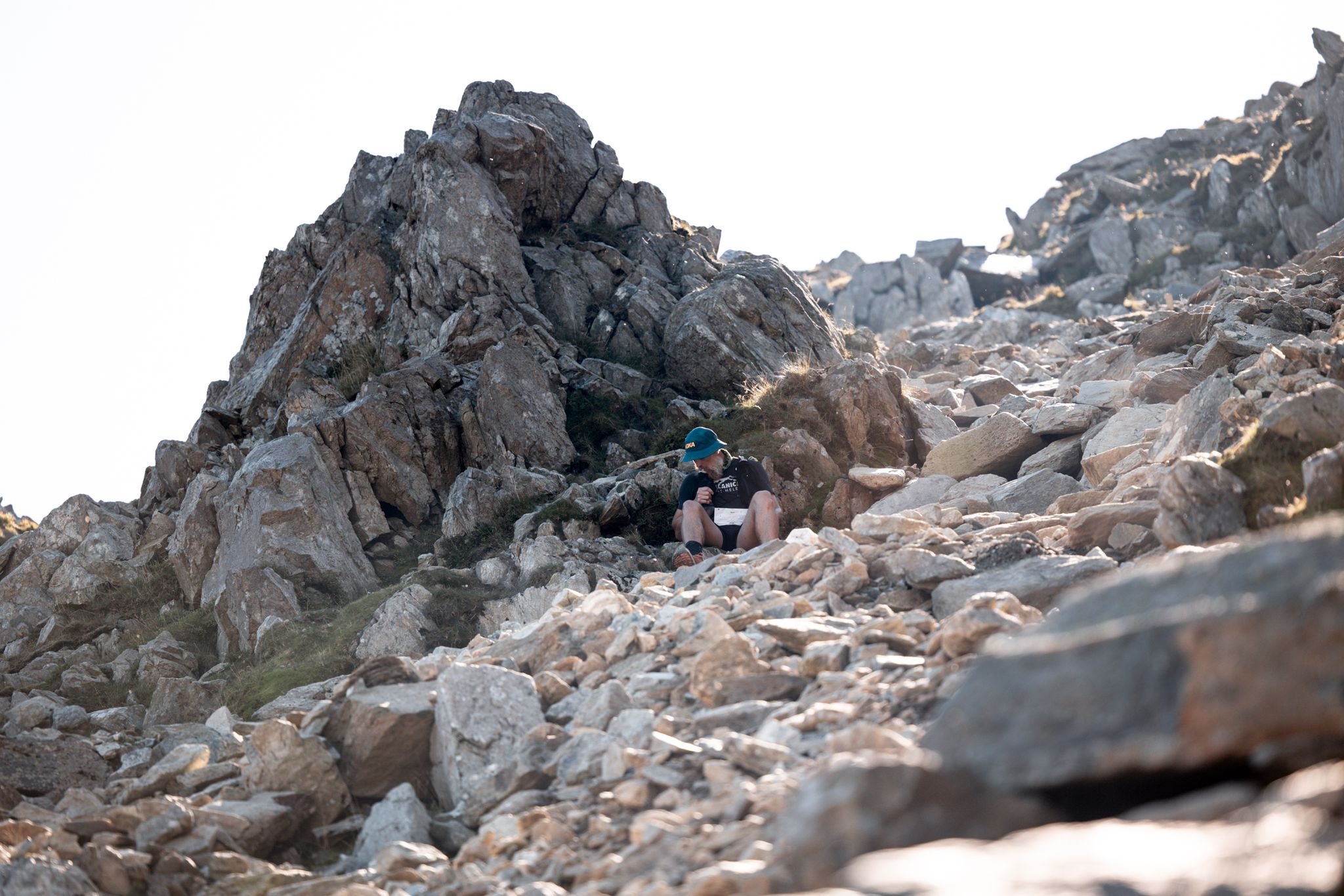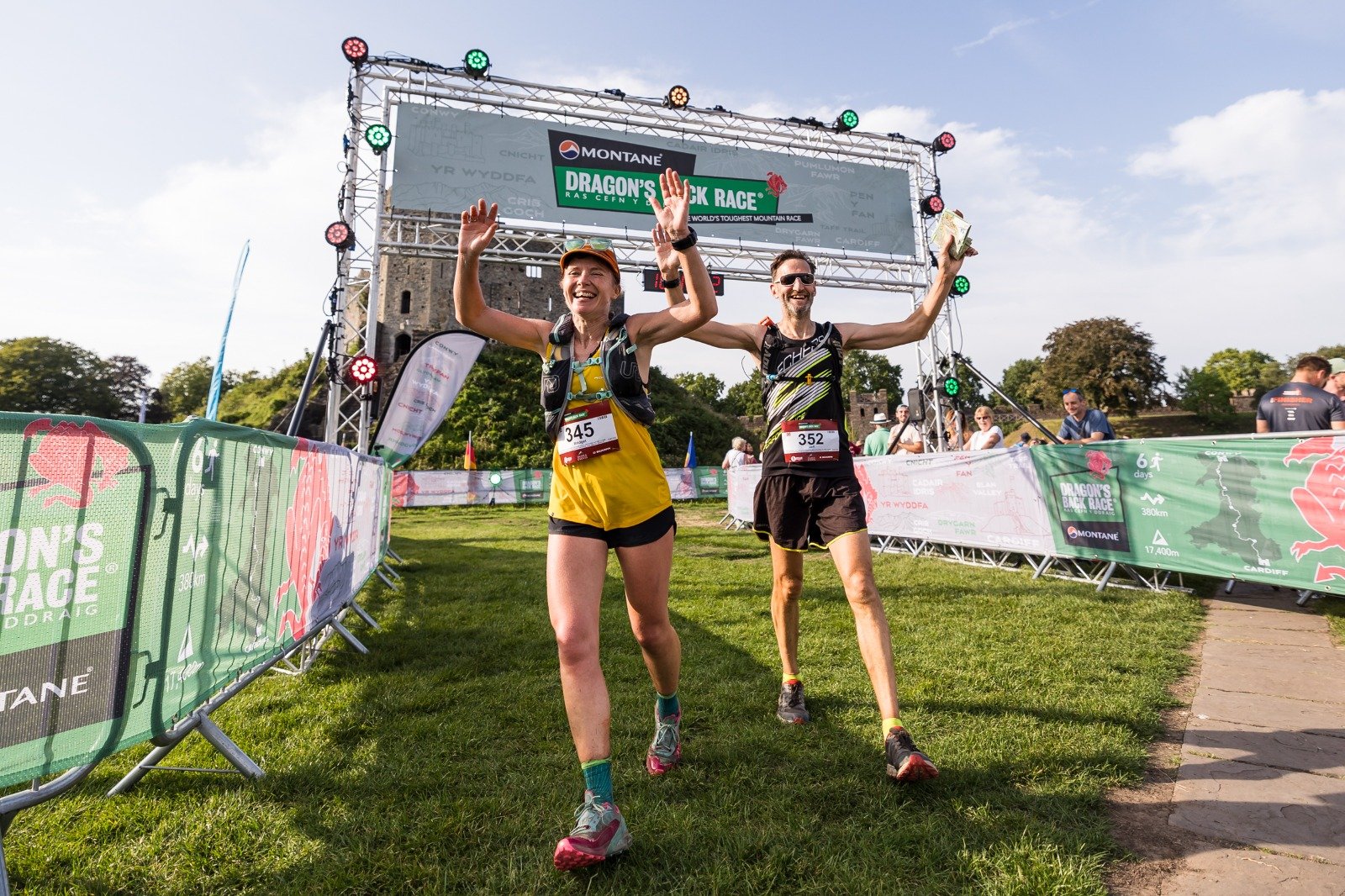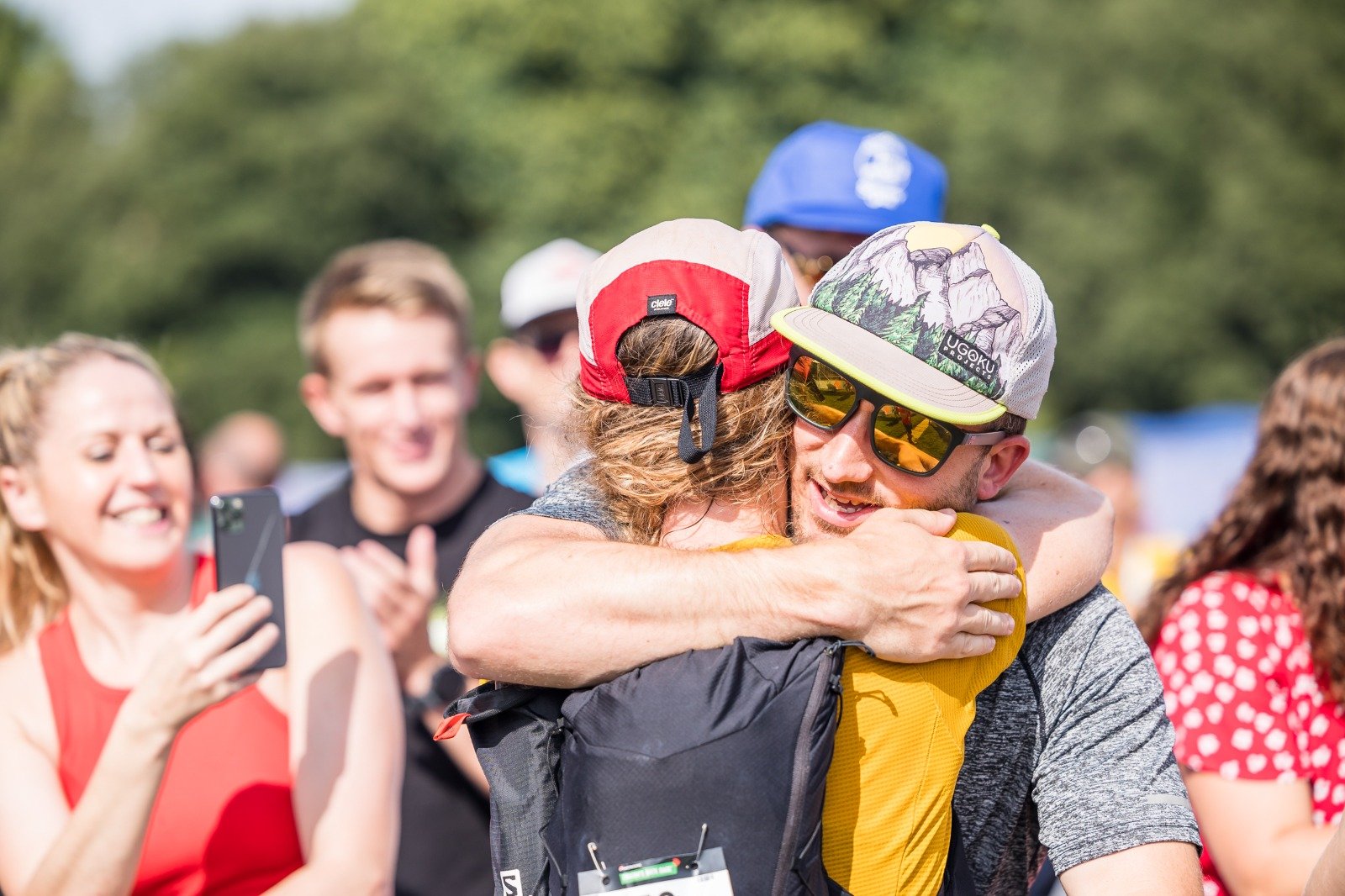First-timer’s guide to the Dragon’s Back Race
Why do entries sell out?
Previous participants describe the Dragon’s Back Race® as an incredible journey, an awesome challenge, a unique experience and a once in a lifetime adventure. These excellent reviews often mention the great camaraderie between participants, the amazing support from the event volunteers and the stunning route through some hidden and beautiful corners of Wales. We take care of all of the logistical arrangements so that you can switch off and just concentrate on running through stunning scenery and meeting awesome like-minded people.
380km through Wales? Is that all in one go?
No, the Dragon’s Back Race® is a multi-stage race. The distance of 380km is split into six days of running. Every evening there is a new ‘pop-up’ overnight campsite where you will get hearty afternoon snacks, dinner, and breakfast, catch up with fellow participants, have access to the race medics, and crucially get a good night’s sleep in tented accommodation. We transport all your overnight baggage between campsites.
If 380km still seems rather overwhelming, there is also the option to complete the Hatchling. This allows participants to experience the race route in more manageable chunks. It is still an epic mountain challenge, and your achievement will be recognised with a special memento at the finish.
Refuelling and recharging the batteries back at camp ©No Limits Photography
What experience do you need?
The Dragon’s Back Race is not a vetted event and we are happy to offer entries to anyone who agrees to our participant declaration and the terms and conditions. In summary, you must consider yourself to be an experienced off-road runner, and capable of being self-sufficient and making safe decisions in the Welsh mountains.
Who will the other participants be?
A wide variety of people run the Dragon’s Back Race®. You will find all ages, backgrounds and levels of experience, plus lots of different nationalities. There will be some very experienced ultra-runners but the majority consider themselves to be ‘normal people’ who are taking part in the spirit of completing the challenge and enjoying the experience, rather than racing for a podium position.
All in all, expect to find a very friendly and supportive atmosphere in camp. Lots of participants end up running large sections of the route together, in the process making great friends for life!
Bespoke cooling down service at the support point ©No Limits Photography
How far do you run each day?
The average daily distance is 63km. You should also note the average daily ascent of 2,900m. The first day has the shortest distance (52km) but the most ascent (3,800m). Often cited as the crux day, the third day is one of the longest (71km) but also has significant ascent (3,500m). Ascent is also compounded by the equivalent descent!
For the Hatchling, the average daily distance is approximately half.
How long do you have to complete each day?
You have from 06:00 to 22:00 to complete the course each day. If you arrive into camp after 22:00, then you will be classed as non-competitive in the results. You will also be allowed to switch to the Hatchling.
Do you need to be able to navigate?
The route is not way-marked on the ground, and so you will need to navigate using a GPS device and/or map. This event has been designed so that it is possible to complete it by ‘following the GPS track’ and many participants do navigate using solely this method. However, even if you are navigating using a GPS device, it is mandatory to carry at all times the Harvey Maps 1:40 000 scale event map that we will supply at registration (and know how to use it).
It’s not all running at the Dragon’s Back Race® ©No Limits Photography
Can you have a support crew?
It is against the event rules for any participant to receive outside support, such as friends/family providing assistance or food, and contravening these rules will result in penalties. It is perfectly acceptable for friends and family to intercept participants on the course to cheer them on.
Friends and family are welcome at Conwy castle for the start, but not inside the registration or briefing marquees. They are also very welcome at Cardiff Castle for the finish and the presentation evening.
How do people prepare for this?
It is a tough challenge but with the right preparation, anyone can complete the event if they are willing to put in the time to train and prepare well. This training could mean gradually building up your mileage and running back to back days in the mountains to get used to rough terrain. It’s also a good idea to test out your equipment and hill food ahead of the event.
Given that Wales is fairly accessible from many parts of the country, lots of participants visit in advance to recce the route. This can be very helpful to familiarise yourself with the route and the terrain ahead of the event so that you know what to expect. You could also join one of the official guided race recce trips to explore the route with an experienced guide and meet some fellow participants.
We will be in regular contact in the run up to the event with plenty of support in the form of guidance articles, and there is also a dedicated Facebook group for participants where you can swap ideas and advice on how to prepare.
Not quite ready for the full race route? Then consider the Hatchling course option, potentially a useful stepping stone towards completing the full race route in the future.
Enjoy the scenery during your adventure ©No Limits Photography
What happens if something goes wrong?
We have a professional and well-equipped medical and mountain safety team who are there to assist as needed. Every participant also carries a GPS tracker so that race control can see your location and follow your progress throughout the event. The GPS tracker allows you to summon help in an emergency and receive messages from race control.
Can you walk some of it?
Absolutely! But not all of it. It is worth thinking about how you will pace yourself over the six days. Starting off too fast may mean that you have tired yourself out by the end of the week. Finding a good steady pace that you can maintain from the beginning may be more efficient. This could mean power-walking the uphills, jogging the flat sections and running the downhills.
It is always worth thinking about other ways that you could save time; setting off as early as possible (06:00!), being well organised with your kit at the overnight camps to avoid any unnecessary faffing, and knowing the route well by recceing in advance and practising your map reading skills.
During the longer days, such as day three, you may need to still push a little harder to ensure you aren’t chasing the course cut-off times too finely.
What kind of running should you expect?
You should be ready for very technical terrain in northern Snowdonia on day one and in the Rhinogydd on day two. If you are an experienced trail or road runner then we suggest some weekend trips to the mountains of Wales so that you can get used to moving over rough and rocky mountainous terrain. You could also join one of the official guided race recce trips.
About 22% of the 2019 route (statistic t.b.c for 2021) will be over pathless mountain sides, with the rest on more defined (but technical) paths, and tracks and roads:
Scrambling through the Welsh Mountains ©No Limits Photography
How do I find out more?
Watch the daily highlight films from the 2022 event
Join a RAW Adventures recce trip to find out more
Get in touch and ask us a question
Celebrating at the finish line with loved ones ©No Limits Photography

